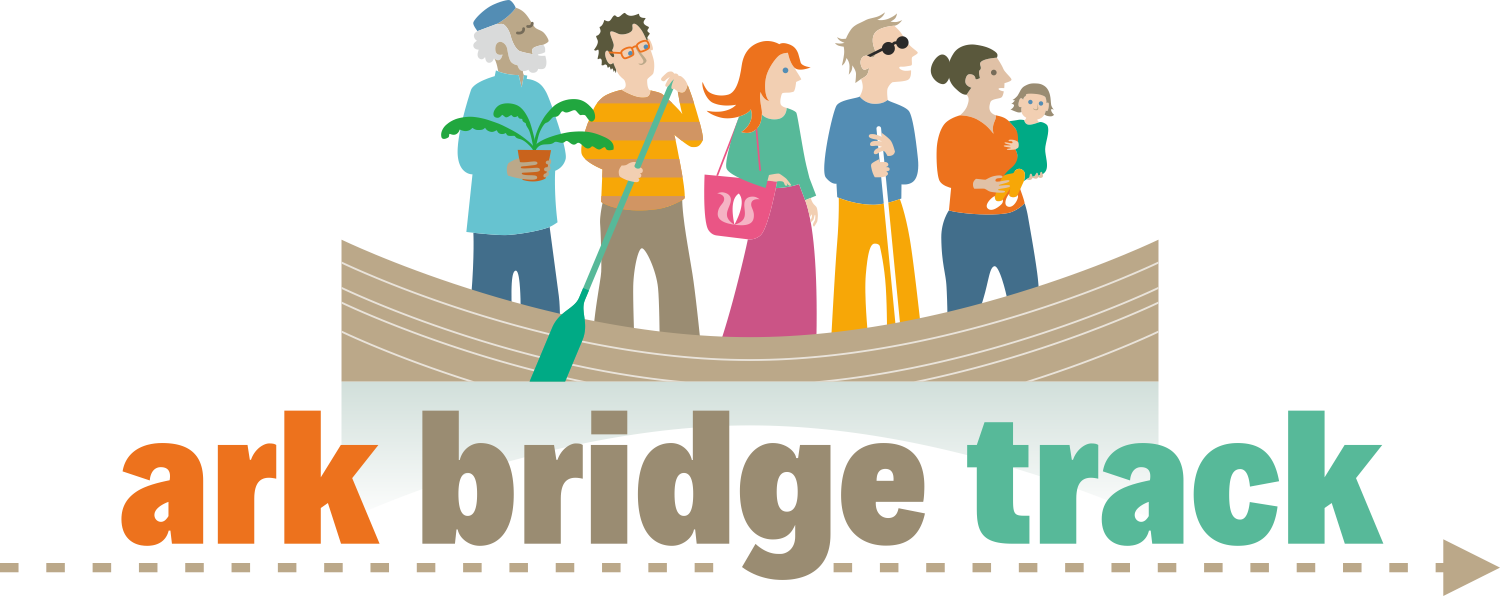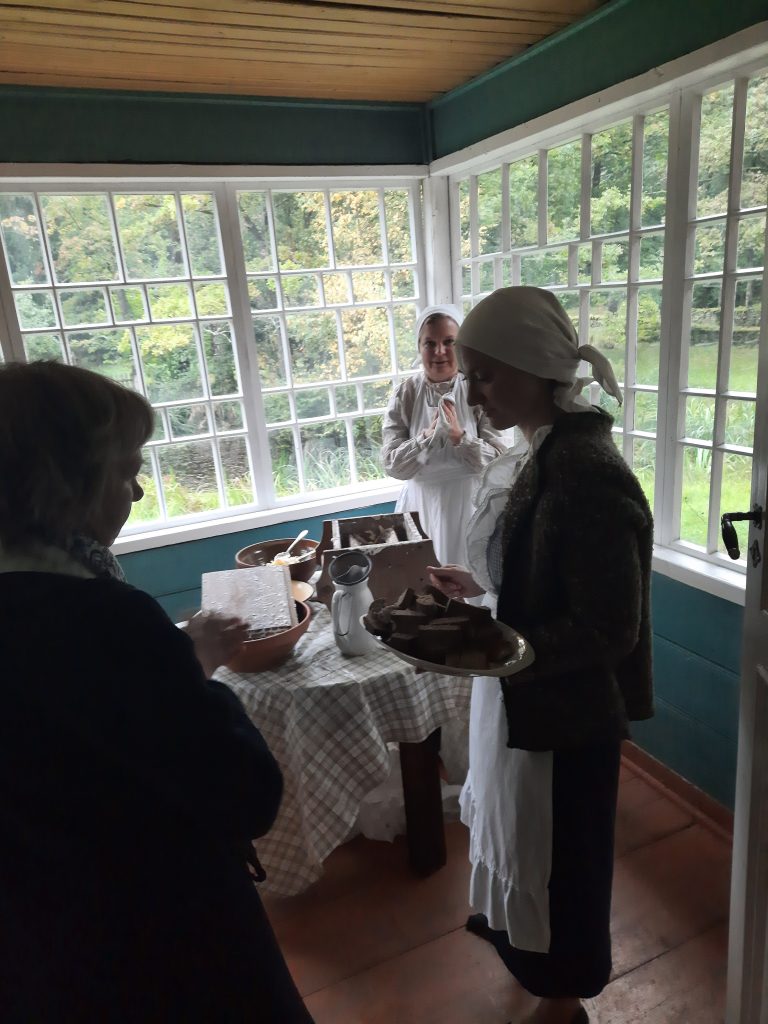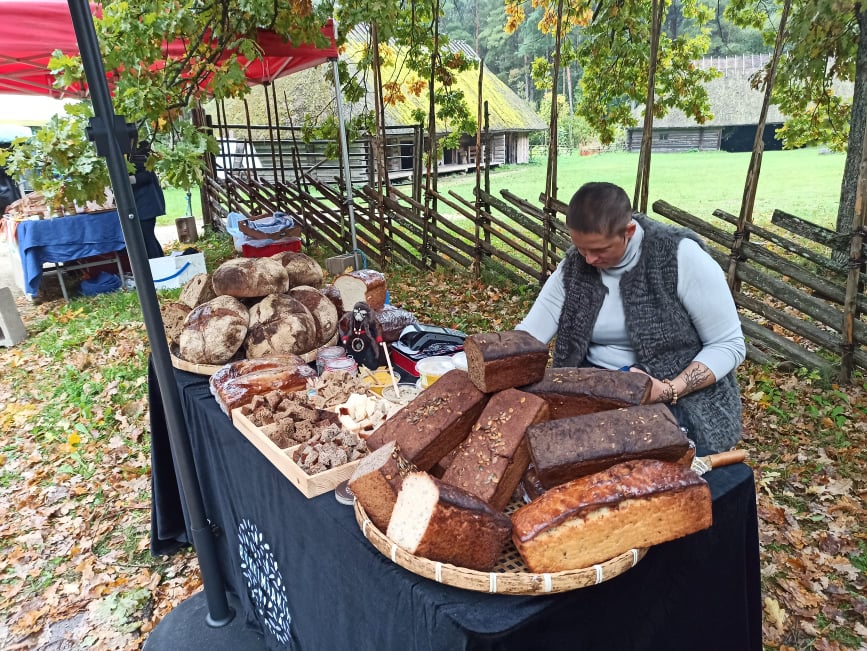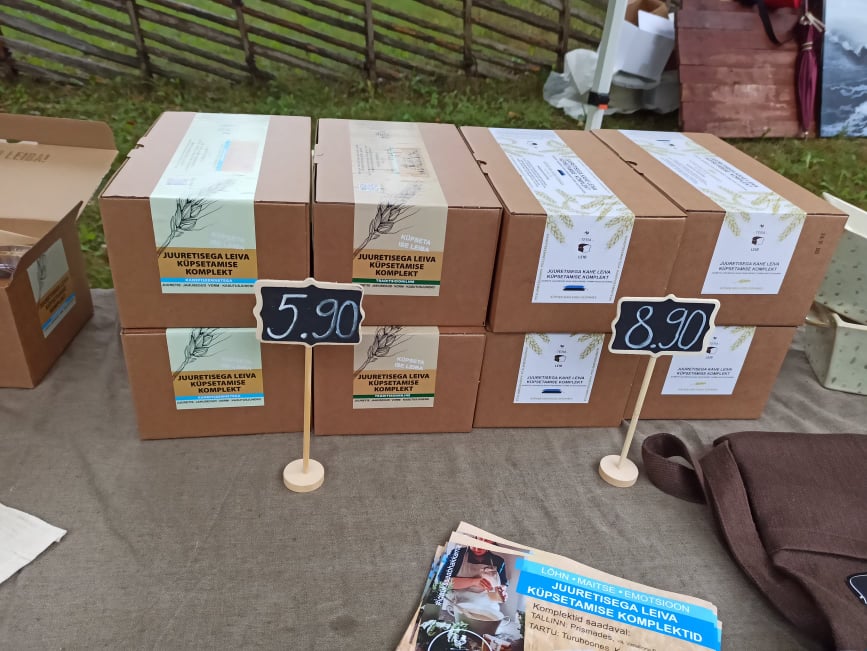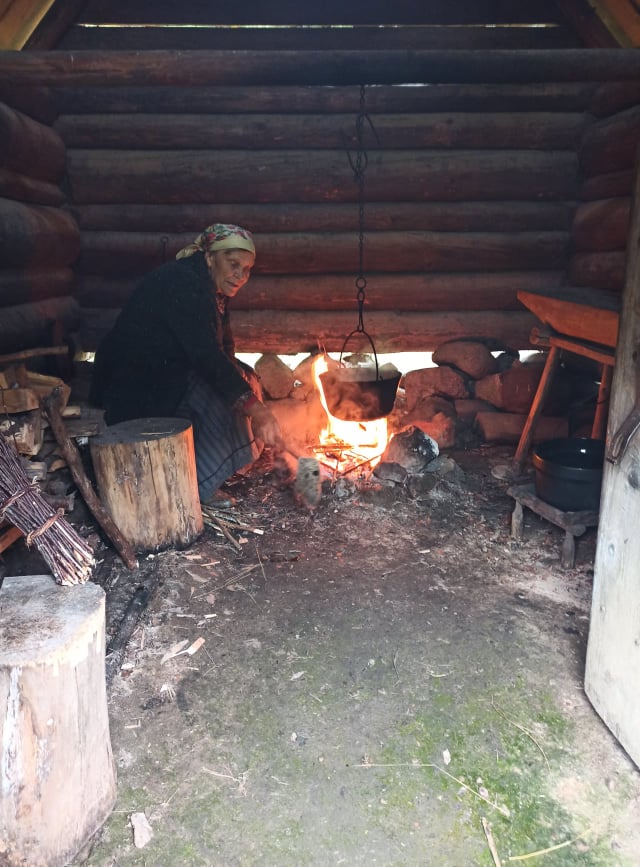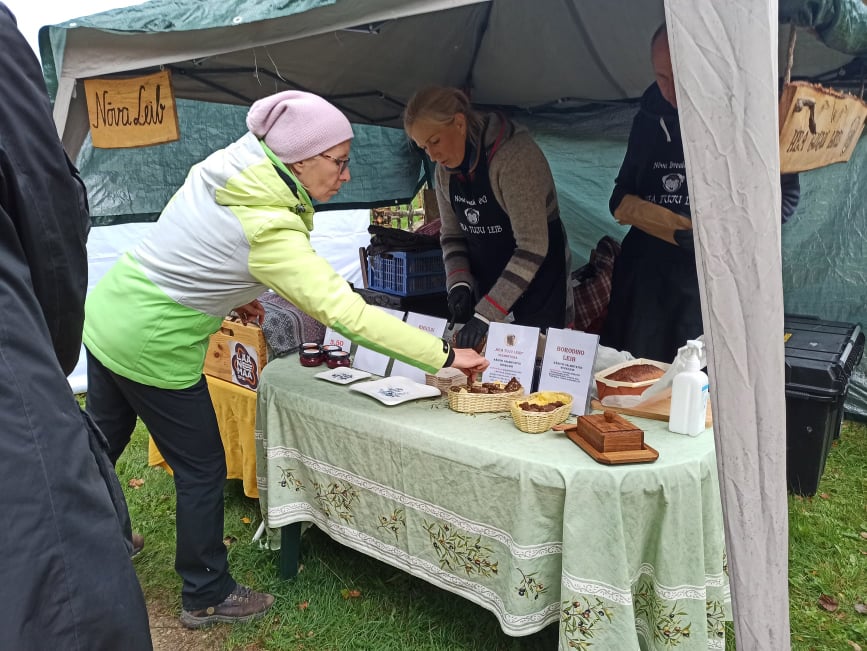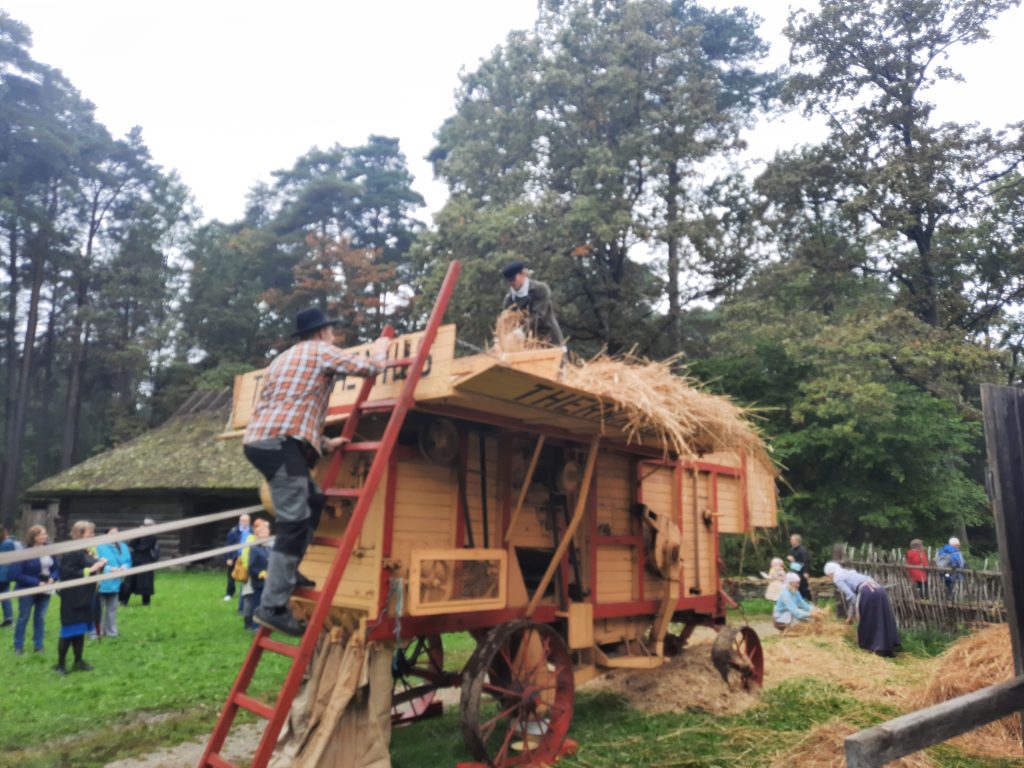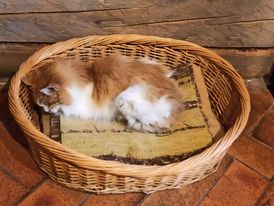
The Estonian Bread Day and Autumn Fair is a traditional holiday, come rain or shine.
The Estonian Open Air Museum is a special place. The blessing of the bread, a relay race of bakers and chimney-sweeps, an award to the best bread, handicraft activities, dance, and singing, all in one day. This September the weather is really capricious: yesterday it was sunny and over 20 degrees, now there is gentle rain and a cool wind. This, however, does not deter visitors.
The bread fair, bread tasting, and the best bread award ceremony are very popular, as the winner of the latter is decided by the visitors’ votes. You can find a wide range of useful and not so useful things to buy at the fair. You can buy a “Bake it yourself” box with the ingredients, and with a guarantee that you can bake bread exactly like the one you tasted here.
Visitors can try all kinds of tasks related to baking bread, including threshing. What makes this day special is that in addition to manual threshing, today there is a thresher lent by the Farming Machines & Museum Of Heino Prost. You can also see harvesting tools, types of grains, and old measurement tools.
A performance by the Soveljada folk dance ensemble is followed by the blessing of the bread in the church. The little ones can see puppet shows; older kids can make their own milk cartons and watch films. In the 1978 apartment of the Kolkhoz Apartment Building, the wife greets the guests with waffles and homemade ice cream. In the sauna of the Pulga Farm, you can see an autumn washing day—traditionally there were laundry days twice a year, in autumn and in spring. Today the wife and the maid heat the sauna after washing so that they can relax after a hard day’s work.
The school building of the Education Centre is a key part of the open-air museum. In the programme, visitors can learn about measurement units and measuring tools of old times. This is where the oldest resident of the museum likes to rest. The 20-year-old cat mostly sleeps and is greeted happily by adults who came here regularly for museum education programmes as children.
